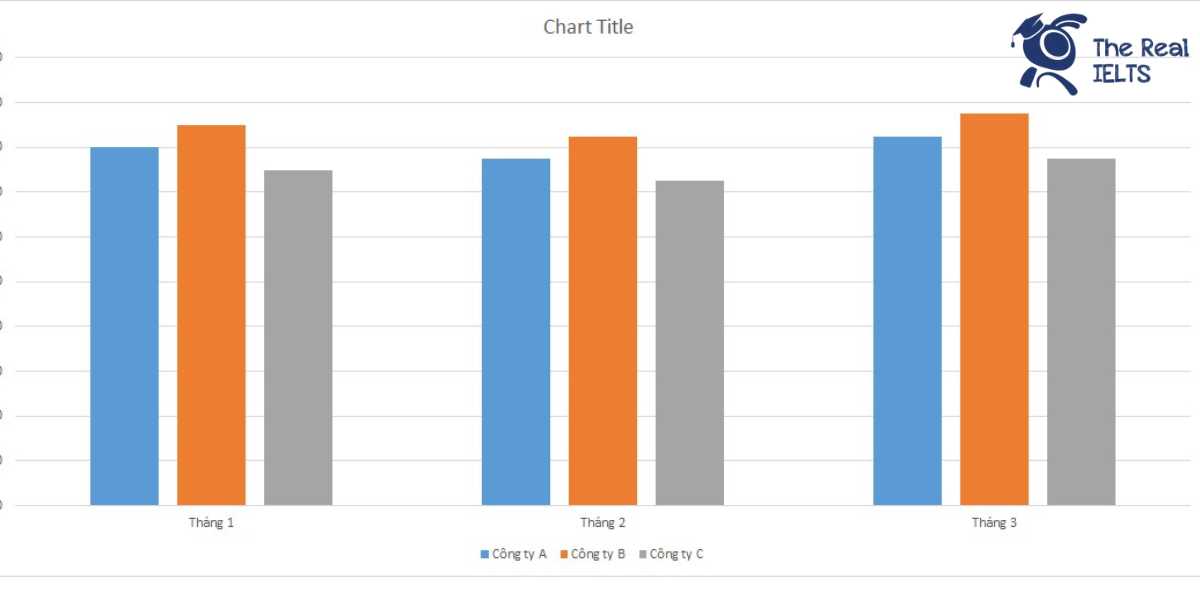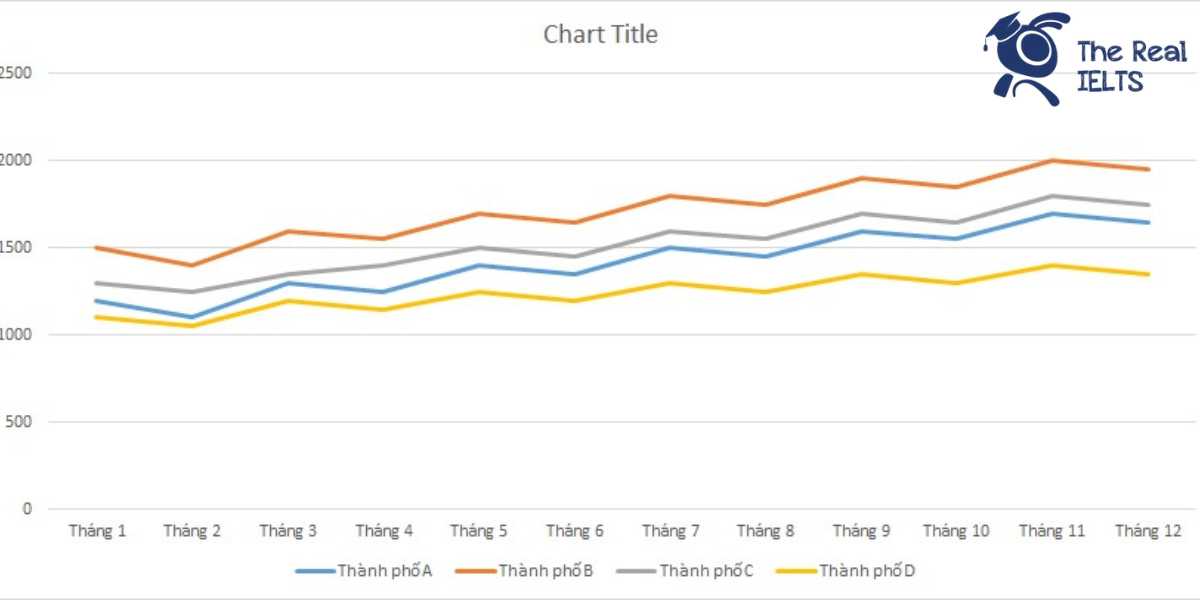IELTS Reading 11: Development of Artificial Intelligence (AI) là chủ đề thuộc chuỗi bài luyện tập 11 dạng bài IELTS Reading và các bài tập luyện tập.
Học lại bài cũ: IELTS Reading 10: The Role of National Parks.
IELTS Reading: Development of Artificial Intelligence (AI)
Artificial Intelligence (AI) has rapidly transformed from science fiction into a reality, affecting various aspects of life today. From healthcare to transportation, AI’s influence is undeniable. But what exactly is AI, and how has it developed over the years?
The Beginnings of AI
The concept of AI was first introduced in the mid-20th century. In 1956, the term “artificial intelligence” was coined by John McCarthy during a conference at Dartmouth College. Early AI research focused on problem-solving and symbolic methods, laying the foundation for future developments. One of the earliest breakthroughs came in the form of the Logic Theorist, a program that could solve mathematical theorems, created by Allen Newell and Herbert A. Simon in 1955.
Growth and Challenges
Despite early excitement, the development of AI faced challenges. In the 1970s, funding and interest declined, a period often referred to as the “AI winter.” The limitations of computing power and the lack of progress in natural language understanding contributed to this slowdown. However, advancements in algorithms and the increase in computing power in the 1980s revived interest in AI.
Machine Learning and Neural Networks
A significant breakthrough in AI came with the development of machine learning, a subset of AI that enables systems to learn from data. Instead of being programmed to perform tasks, machine learning allows computers to develop their own algorithms based on the input they receive. This was coupled with the advancement of neural networks, inspired by the way the human brain works.
Deep learning, a branch of machine learning that uses multi-layered neural networks, has achieved remarkable results. Today, deep learning is behind many AI-driven applications such as voice recognition, self-driving cars, and personalized recommendation systems.
AI in Everyday Life
AI has become an integral part of modern life, from smart assistants like Siri and Alexa to recommendation algorithms on social media platforms. In healthcare, AI aids in diagnosing diseases and creating personalized treatment plans. In transportation, AI is central to the development of autonomous vehicles.
Ethical Concerns and Future Challenges
As AI continues to grow, concerns about its impact on employment, privacy, and ethics have emerged. Some fear that AI could replace human jobs in various sectors, leading to significant unemployment. Additionally, there are concerns about AI systems being used for surveillance and infringing on personal privacy.
Another concern is the potential for AI to develop beyond human control, leading to unpredictable outcomes. The idea of superintelligent AI, systems far surpassing human intelligence, has been discussed by experts like Elon Musk and Stephen Hawking, who warned of its potential dangers.
Conclusion
The development of AI is advancing at an unprecedented pace, with profound implications for society. While AI has the potential to revolutionize various industries, it also raises important ethical and social questions. As AI continues to evolve, ensuring that its development is aligned with human values and ethical considerations will be crucial.
Question
1. Multiple Choice (Chọn đáp án đúng)
Câu hỏi: What caused the decline in AI research in the 1970s?
A) Lack of funding and progress in computing power
B) Lack of interest in the scientific community
C) Unavailability of large datasets
D) Competition from other scientific fields
2. True/False/Not Given (Đúng/Sai/Không có thông tin)
Câu hỏi:
- Neural networks were developed based on the human brain structure.
- The “Logic Theorist” program could only solve simple arithmetic problems.
- AI has been fully integrated into the healthcare system worldwide.
3. Yes/No/Not Given (Có/Không/Không có thông tin)
Câu hỏi:
- AI will soon replace most human jobs in the transportation industry.
- Experts believe that superintelligent AI could become dangerous if not controlled.
- AI’s potential to improve human life is widely accepted by all scientists.
4. Matching Information (Ghép thông tin)
Câu hỏi: Match the following statements to the correct paragraph in the passage.
- The concept of AI was first introduced in the 1950s.
- AI has significant applications in autonomous vehicles.
- There are concerns regarding AI and personal privacy.
Paragraphs:
A) The Beginnings of AI
B) AI in Everyday Life
C) Ethical Concerns and Future Challenges
5. Matching Headings (Ghép tiêu đề)
Câu hỏi: Choose the correct heading for each section of the passage.
- The Beginnings of AI
- Growth and Challenges
- Ethical Concerns and Future Challenges
Headings:
A) The Early History of AI
B) Limitations and Setbacks of AI Development
C) The Dangers of AI
6. Matching Sentence Endings (Ghép kết thúc câu)
Câu hỏi: Complete each sentence by matching it with the correct ending.
- The AI winter refers to a period…
- Machine learning allows computers to…
- Experts have warned about the dangers of…
Endings:
A) when AI development slowed significantly.
B) create their own algorithms from data.
C) superintelligent AI beyond human control.
7. Sentence Completion (Hoàn thành câu)
Câu hỏi: Complete the sentences below using NO MORE THAN TWO WORDS from the passage.
- The term “artificial intelligence” was first used at a __________.
- The development of __________ has led to advancements in self-driving cars.
8. Summary Completion (Hoàn thành bản tóm tắt)
Câu hỏi: Complete the summary below with words from the passage.
The development of AI began in the mid-20th century, with significant progress in the 1950s. Early programs such as the __________ were successful in solving complex problems. However, AI development slowed during the “AI winter” due to a lack of __________ and advancements in computing power. In recent years, the introduction of machine learning and __________ have led to the rise of AI applications in everyday life.
9. Diagram Label Completion (Hoàn thành nhãn sơ đồ)
Câu hỏi: Label the diagram below with NO MORE THAN TWO WORDS from the passage.
(Assuming there’s a diagram of the human brain and its connection to neural networks)
- __________: The biological inspiration for neural networks.
- __________: A key part of deep learning technology used in modern AI systems.
10. Short Answer Questions (Câu hỏi trả lời ngắn)
Câu hỏi: Answer the following questions using NO MORE THAN THREE WORDS from the passage.
- Who coined the term “artificial intelligence”?
- What type of vehicles are being developed using AI?
- Which famous entrepreneur has raised concerns about superintelligent AI?
11. Table Completion (Hoàn thành bảng)
Câu hỏi: Complete the table below using words from the passage.
| Development Stage | Key Event/Person | Impact |
|---|---|---|
| Early AI Research (1950s) | __________ | Coined the term “artificial intelligence” |
| Machine Learning (Recent) | __________ | Led to breakthroughs in AI applications |
Answers
1. Multiple Choice (Chọn đáp án đúng)
Câu hỏi: What caused the decline in AI research in the 1970s?
Đáp án: A) Lack of funding and progress in computing power
2. True/False/Not Given (Đúng/Sai/Không có thông tin)
Câu hỏi:
- Neural networks were developed based on the human brain structure.
Đáp án: True - The “Logic Theorist” program could only solve simple arithmetic problems.
Đáp án: False - AI has been fully integrated into the healthcare system worldwide.
Đáp án: Not Given
3. Yes/No/Not Given (Có/Không/Không có thông tin)
Câu hỏi:
- AI will soon replace most human jobs in the transportation industry.
Đáp án: No - Experts believe that superintelligent AI could become dangerous if not controlled.
Đáp án: Yes - AI’s potential to improve human life is widely accepted by all scientists.
Đáp án: Not Given
4. Matching Information (Ghép thông tin)
Câu hỏi: Match the following statements to the correct paragraph in the passage.
- The concept of AI was first introduced in the 1950s.
Đáp án: A) The Beginnings of AI - AI has significant applications in autonomous vehicles.
Đáp án: B) AI in Everyday Life - There are concerns regarding AI and personal privacy.
Đáp án: C) Ethical Concerns and Future Challenges
5. Matching Headings (Ghép tiêu đề)
Câu hỏi: Choose the correct heading for each section of the passage.
- The Beginnings of AI
Đáp án: A) The Early History of AI - Growth and Challenges
Đáp án: B) Limitations and Setbacks of AI Development - Ethical Concerns and Future Challenges
Đáp án: C) The Dangers of AI
6. Matching Sentence Endings (Ghép kết thúc câu)
Câu hỏi: Complete each sentence by matching it with the correct ending.
- The AI winter refers to a period…
Đáp án: A) when AI development slowed significantly. - Machine learning allows computers to…
Đáp án: B) create their own algorithms from data. - Experts have warned about the dangers of…
Đáp án: C) superintelligent AI beyond human control.
7. Sentence Completion (Hoàn thành câu)
Câu hỏi: Complete the sentences below using NO MORE THAN TWO WORDS from the passage.
- The term “artificial intelligence” was first used at a __________.
Đáp án: conference - The development of __________ has led to advancements in self-driving cars.
Đáp án: deep learning
8. Summary Completion (Hoàn thành bản tóm tắt)
Câu hỏi: Complete the summary below with words from the passage.
The development of AI began in the mid-20th century, with significant progress in the 1950s. Early programs such as the Logic Theorist were successful in solving complex problems. However, AI development slowed during the “AI winter” due to a lack of funding and advancements in computing power. In recent years, the introduction of machine learning and deep learning have led to the rise of AI applications in everyday life.
9. Diagram Label Completion (Hoàn thành nhãn sơ đồ)
Câu hỏi: Label the diagram below with NO MORE THAN TWO WORDS from the passage.
(Assuming there’s a diagram of the human brain and its connection to neural networks)
- Human brain: The biological inspiration for neural networks.
- Deep learning: A key part of deep learning technology used in modern AI systems.
10. Short Answer Questions (Câu hỏi trả lời ngắn)
Câu hỏi: Answer the following questions using NO MORE THAN THREE WORDS from the passage.
- Who coined the term “artificial intelligence”?
Đáp án: John McCarthy - What type of vehicles are being developed using AI?
Đáp án: Autonomous vehicles - Which famous entrepreneur has raised concerns about superintelligent AI?
Đáp án: Elon Musk
11. Table Completion (Hoàn thành bảng)
Câu hỏi: Complete the table below using words from the passage.
| Development Stage | Key Event/Person | Impact |
|---|---|---|
| Early AI Research (1950s) | John McCarthy | Coined the term “artificial intelligence” |
| Machine Learning (Recent) | Deep learning | Led to breakthroughs in AI applications |















